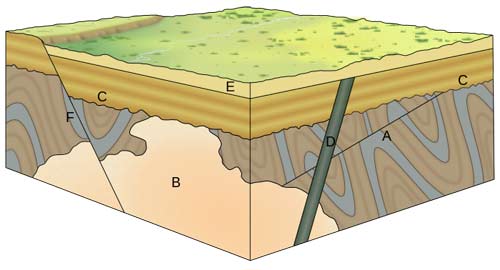cross-cutting

Cross-cutting relationships can be used to determine the relative ages of rock strata and other geological structures. A – folded rock strata cut by a thrust fault; B – large intrusion (cutting through A); C – erosional angular unconformity (cutting off A & B) on which rock strata were deposited; D – volcanic dike (cutting through A, B & C); E – even younger rock strata (overlying C & D); F – normal fault (cutting through A, B, C & possibly E).
Cross-cutting is an interruption of one geologic feature by another, which can give an indication of the relative ages of these geologic features/events; for example, a fault cutting across an impact crater would be younger than the crater.


